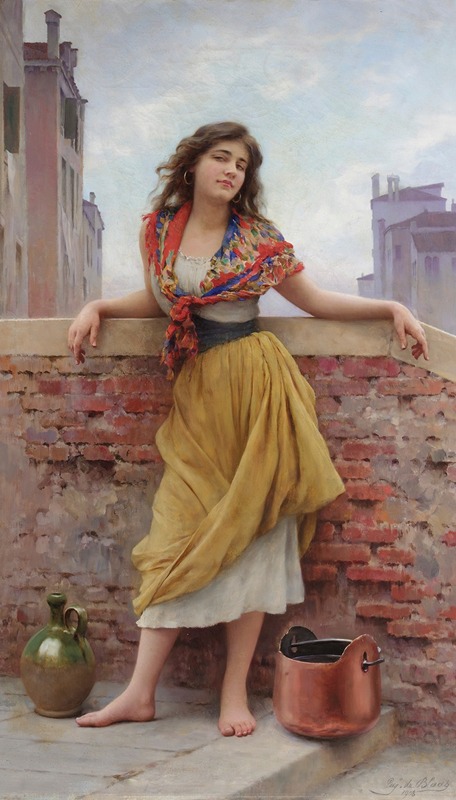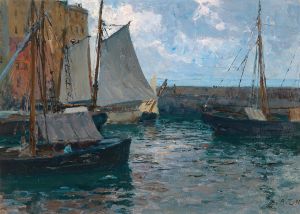
The Watercarrier
A hand-painted replica of Eugen von Blaas’s masterpiece The Watercarrier, meticulously crafted by professional artists to capture the true essence of the original. Each piece is created with museum-quality canvas and rare mineral pigments, carefully painted by experienced artists with delicate brushstrokes and rich, layered colors to perfectly recreate the texture of the original artwork. Unlike machine-printed reproductions, this hand-painted version brings the painting to life, infused with the artist’s emotions and skill in every stroke. Whether for personal collection or home decoration, it instantly elevates the artistic atmosphere of any space.
Eugen von Blaas, an Austrian painter known for his genre scenes, created "The Watercarrier" in the late 19th century. Von Blaas was born on July 24, 1843, in Albano Laziale, Italy, and was the son of the painter Karl von Blaas. He is renowned for his detailed and vibrant depictions of Venetian life, often focusing on everyday scenes and the people of Venice. His works are characterized by their vivid colors, meticulous attention to detail, and the ability to capture the essence of his subjects' personalities and surroundings.
"The Watercarrier" is one of von Blaas's notable works, exemplifying his skill in portraying the daily life of ordinary people with charm and realism. The painting depicts a young woman, presumably a water carrier, engaged in her daily task. She is dressed in traditional attire, which von Blaas often used to highlight the cultural aspects of the Venetian people. The woman's expression and posture suggest a moment of pause, perhaps reflecting the artist's interest in capturing not just the physical appearance but also the emotional state of his subjects.
Von Blaas's technique in "The Watercarrier" showcases his academic training and his ability to blend realism with a touch of romanticism. The use of light and shadow in the painting adds depth and dimension, bringing the scene to life. The background, while not overly detailed, provides enough context to place the subject within a Venetian setting, a common theme in von Blaas's work.
Throughout his career, Eugen von Blaas remained dedicated to genre painting, a popular style in the 19th century that focused on scenes from everyday life. His works were well-received during his lifetime, and he exhibited in various prestigious venues, including the Royal Academy in London and the Paris Salon. Von Blaas's paintings, including "The Watercarrier," are appreciated for their technical excellence and their ability to convey the beauty and simplicity of ordinary moments.
"The Watercarrier" reflects von Blaas's fascination with the human figure and his commitment to portraying the dignity and grace of his subjects. His paintings often feature women, capturing their roles and contributions within society. This focus on female subjects is evident in "The Watercarrier," where the central figure is depicted with respect and admiration.
Eugen von Blaas passed away on February 10, 1931, in Venice, Italy. His legacy endures through his extensive body of work, which continues to be celebrated for its artistic merit and its insightful portrayal of 19th-century Venetian life. "The Watercarrier," like many of his paintings, remains a testament to his skill and his ability to capture the essence of the people and places he depicted. Today, von Blaas's works are held in various private and public collections, admired by art enthusiasts and historians alike for their contribution to the genre painting tradition.


















